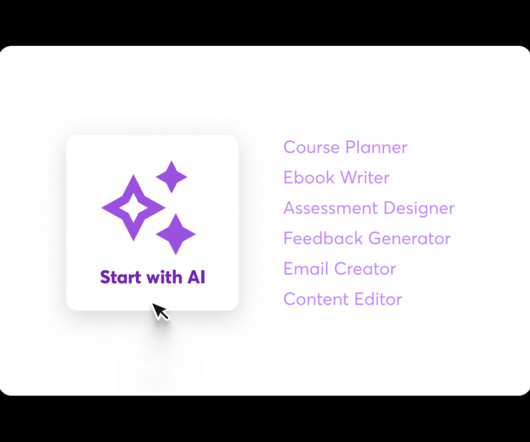Navigating Microlearning Solutions With Bloom's Taxonomy
eLearning Industry
NOVEMBER 5, 2023
Combine microlearning and Bloom's taxonomy to enhance learning engagement and retention. Bloom's taxonomy organizes learning into levels, while microlearning solutions break down information into small, manageable chunks. This post was first published on eLearning Industry.




















































Let's personalize your content